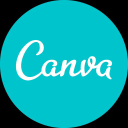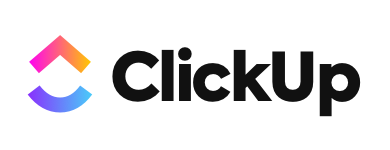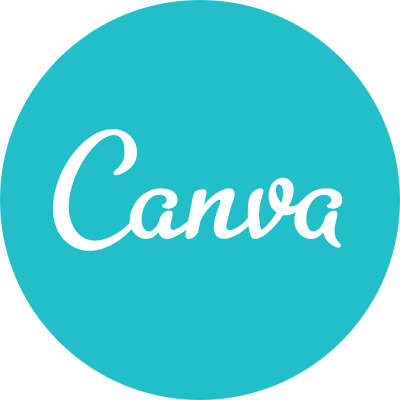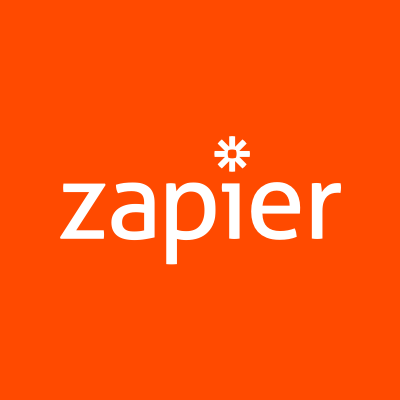I Make $300K/Year With A Team Of Ghostwriters That Create Content For Brands
Hello! Who are you and what business did you start?
Hey, I’m Lacy and I’m a content strategist, author of the bestselling Kindle ebook Make a Killing With Content, and the Director of The Content Direction Agency. We specialize in done-for-you content strategy and writing retainers for the content between launches or promotions that helps businesses grow, nurture, and prime their audience to say “hell yes!” before they ever see the offer.
Over the past 9 years, we’ve helped hundreds of business owners create bespoke content strategies to consistently drive quality traffic to websites, increase monthly email leads by 300% or more, improve search engine rankings, enroll dozens of clients per month into membership programs, support multi-six figure launches, and drive millions of views of our articles.

What's your backstory and how did you come up with the idea?
In my past life, I was a food writer and associate editor for a hyper-local magazine here in Boulder, Colorado. Nice work if you can get it — getting paid to eat and have opinions!
As you work with clients you can begin to define your niche by the types of work you like best or the types of clients you prefer to work with.
But in 2010, I got pregnant with our daughter and realized I didn’t want to be working 60+ hour weeks and 3 am deadlines with an infant. Even worse, we discovered that the cost of infant child care would eat up more than half my salary — so I’d be working for peanuts and not seeing my kid.
I decided to leave my job and work as a freelance writer to stay home with my daughter. I also started a food blog — like everyone else in 2011. The food blog was quite successful in many respects; I grew an email list to more than a thousand people in less than a year, was seeing great traffic from organic SEO, and was invited to be a contributor to a Martha Stewart website.
But, monetarily, I wasn’t making much. I lovingly refer to that as my “four-figure year.”
At the end of the year, my husband and I talked and, while he was super supportive of me staying home with our baby, we agreed I needed to be earning more money for us to be comfortable.
Luckily, I had a new plan!
I thought I’m pretty good at this blogging thing. Maybe other businesses would pay me to blog for them. And lo and behold, there was a demand for that sort of service.
Tell us how you can make money writing for other people.
When I started, I assumed people would just pay me for the words, but it soon became clear that business owners were looking for an expert to help guide their content strategy as well.
At first, I sold blog posts individually, but I quickly realized the results (and better money) were in long-term retainers. I quickly moved to the six-month retainer package we still use today.
Over the next several years I spent hundreds of hours and thousands of dollars educating myself on content marketing and becoming an expert in my field. As the business grew, I brought on additional writers to help me serve clients.
Today, we have four writers and a cabal of other talented contractors (including SEO, graphic designers, and customer research experts) who help us serve our clients.
Describe the process of launching the business.
As the original business was just me, I called myself the “Ghost Blogger” and threw together a very simple website. I networked inside Facebook groups, notably the original BSchool group, and that was mainly how I got my first clients. My first clients were business owners in a similar “startup” phase as me, including coaches, branding experts, and course creators.

But as we grew, I knew I wanted to serve bigger, more established businesses and I needed a brand to match.
One of my earliest clients was Sarah Ashman of Public Persona Studio, a brand strategist. We worked together to create an incredible, memorable brand. Our vision was of a secret agent or detective agency, and she encouraged me to call myself (still mostly a one-woman show at the time) an agency. She asked me to make a list of dream clients. My new brand would help me woo as a way of envisioning what was possible.
We launched the rebrand in January 2015. I created a digital scavenger hunt that sent people clicking through my back catalog of blog posts to find clues that would lead them to be entered in a drawing for a big prize. I asked many of my colleagues and friends in the online industry to donate packages and programs, and we ended up with a prize package worth more than $5,000. As a result, I added more than 100 new people to my email list (which was a lot to me at the time!).

It worked well and the new brand launched with a bang. Within less than 6 months, I had landed one of my “dream” clients from my list.
Since launch, what has worked to attract and retain customers?
Over the years, I’ve tried just about every type of marketing strategy to attract customers — including prospecting on LinkedIn, running Facebook ads, webinars, PR, and more — but what’s consistently worked best for us is word-of-mouth referrals and joint venture partnerships. We try to partner with companies who reach our ideal customers, but aren’t direct competitors; this often includes business coaches, branding or graphic design agencies, and even course platforms and tools like Ruzuku. I typically offer a teaching webinar to their audience with information on how to work with us at the end as the call to action.
I maintain a list of more than 100 past clients, colleagues, and friends who have expressed that they would be open to sending us referrals, and I focus on maintaining contact with them in several ways.
I have specially curated lists on my social media accounts so that I can just see our referral partners’ posts and interact with them, liking posts and leaving comments when appropriate.
I send out personal emails roughly quarterly letting them know what’s been going on in our business and offering up a coffee chat so that I can get caught up on how to refer them to business as well.
We’ve even sent out physical mailers with a beautifully designed newsletter and some swag for our best referral partners. We made it fun by including a postcard they could physically hand or send to someone they wanted to refer to, and by putting a cryptogram (very on-brand for us) on the back page.
In addition, I’m always on the lookout for joint venture opportunities. I love to teach inside other people’s group programs or do a webinar for their audiences. My marketing motto is “show up and be useful,” and I find that the more opportunities I have to step onto someone else’s (virtual) stage, the more interesting leads I get.
How are you doing today and what does the future look like?
We’re currently having our strongest revenue year to date, and because of that, we’ve added two additional writers this year. Our next goal is to scale to $50k monthly recurring revenue, and we’re looking into potentially hiring a salesperson to help us achieve that. (I’m OK at sales, but it’s never been my passion!)
As we grow, the goal is to hone our messaging, continue to create and perfect our systems and how we serve clients, and continue to systematize so that the business can continue not just to run but to grow even if I step away.
Once you start to reach the ceiling where your income is limited by how much work you can personally take on, that’s the perfect time to bring in help for client delivery.
We’re also about to do a new photoshoot and update that amazing brand with some new images to make it feel more like an agency and not just the Lacy show. (I’ve been using the same ones for nearly 7 years — and that’s a lifetime in Internet years!).
Through starting the business, have you learned anything particularly helpful or advantageous?
Around 2016, I wanted to get out of doing as much day-to-day writing and client management as I was doing, and at the time, it seemed like the best way to do so was with digital courses and products. There were so many gurus out there talking about how easy it was to scale your business with courses and group programs, and I bought into the hype.
I knew from my marketing expertise that I would need to grow my audience exponentially to have the type of customer base that would support selling and growing via courses, so I set myself a goal to triple the size of my email list.
I easily met that goal in less than six months and felt primed to launch and sell my program about how to create an editorial calendar for your business. I set myself a goal of selling 50 spots.

And I missed it. I sold something like 46.
After all that work, a year of list building, a big launch with webinars and events, etc. and I missed my goal. I was ready to throw in the towel and burn the whole business down, I was so frustrated and disappointed.
But when I calmed down enough to look at the numbers, I realized two things:
- My launch had converted at nearly 5% — well above the industry average of 1–3%.
- And I hated every minute of it.
It was clear that what “everybody else” was doing wasn’t a good match for my personality or how I wanted to show up and serve. It was an important (and painful!) lesson in following my instincts.
The next year I pivoted back to focusing on selling high-touch, done-for-you services and scaling our agency team to free me up from day-to-day activities, and it’s been the best way to grow my business. We’ve decided to do one final Black Friday sale this year and then close down all my courses and products.
What platform/tools do you use for your business?
Our most important platform is our WordPress website. I always recommend WordPress over other builders (like Wix or Squarespace) because the platform is open-source; they can never go out of business or change their business model in a way that will hurt yours.
My website is custom coded (by Tiny Blue Orange), and we use PopupAlly to create our pretty embedded opt-in forms.
We use Dubsado as an all-in-one solution for scheduling, invoicing, etc.
Our team uses ClickUp for project management and Slack for internal team communications. And, of course, as a distributed team, we use Zoom almost every day to connect internally, with clients, and with potential customers.
What have been the most influential books, podcasts, or other resources?
One of my favorite business books is Essentialism by Greg McKeown. I’ve adapted the wisdom from this book not just in my business, but in my life. It’s different from strict minimalism, and more about discerning the important from the unimportant and moving forward accordingly.
Another book I deeply enjoyed is Clockwork by Mike Michaelowitz, and I work with the official training arm of that business, Run Like Clockwork, as they are a client of mine and I have been a student of theirs.
And the voyeur in me deeply enjoys Claire Pelletreau’s Get Paid Podcast for hearing how things work behind the scenes in many businesses.
Advice for other entrepreneurs who want to get started or are just starting out?
For service providers and anyone considering starting an agency:
- “Freelance” first. Start by doing the work yourself. This also applies to coaches.
- As you work with clients you can begin to define your niche by the types of work you like best or the types of clients you prefer to work with.
- Once you start to reach the ceiling where your income is limited by how much work you can personally take on, that’s the perfect time to bring in help for client delivery.
- Start out with subcontractors. It’s an excellent way to protect yourself as they only get paid when you have work for them. (Ensure you’re keeping things legal, of course.)
- Once your client base feels stable, or you have a certain amount of work, you can transition subcontractors to part-time and then full-time employees.
By stepping things up this way, we’ve been able to grow consistently and hire exactly the help we need, exactly when we need it to serve our clients.
Where can we go to learn more?
If you have any questions or comments, drop a comment below!

Download the report and join our email newsletter packed with business ideas and money-making opportunities, backed by real-life case studies.

Download the report and join our email newsletter packed with business ideas and money-making opportunities, backed by real-life case studies.

Download the report and join our email newsletter packed with business ideas and money-making opportunities, backed by real-life case studies.

Download the report and join our email newsletter packed with business ideas and money-making opportunities, backed by real-life case studies.

Download the report and join our email newsletter packed with business ideas and money-making opportunities, backed by real-life case studies.

Download the report and join our email newsletter packed with business ideas and money-making opportunities, backed by real-life case studies.

Download the report and join our email newsletter packed with business ideas and money-making opportunities, backed by real-life case studies.

Download the report and join our email newsletter packed with business ideas and money-making opportunities, backed by real-life case studies.




























